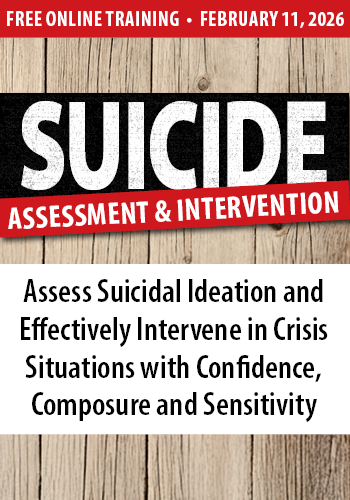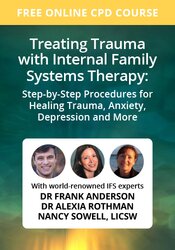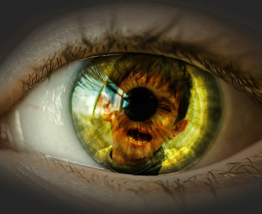Enrol in an online course today for flexible, self-paced learning—no fixed schedule required. Plus, enjoy lifetime access to course materials for convenient revisiting.
Schema Therapy for Trauma (2/5): Schema and Modes

Whether treating trauma or any other longstanding psychological problem, in schema therapy we begin with a thorough assessment process. This allows us to understand our clients and the developmental origin of their problems, so we can write a detailed case conceptualisation and treatment plan. Although schema therapy was developed to treat borderline personality disorder, I am not keen on this or other stigmatising, characterological diagnoses – I am much more interested in the complex, unique human being sitting across from me.
And central to this process of understanding my clients is discovering which of the 18 schemas and modes they have, and how these link to the painful symptoms and life problems they are struggling with. We assess the schemas using the Young Schema Questionnaire (YSQ), the gold-standard measure for assessing which schemas people have and how severe they are. Other measures include the Young Parenting Inventory, which tells us which parent schema development relates to; and the Schema Mode Inventory, which indicates which modes are dominant in someone’s psychological system.
How painful schemas develop
To explain how schemas form, and their relationship to trauma, let’s consider the case of Emma. When she arrives at my office for an assessment she is 33, single, and working as a primary school teacher. In her intake form, Emma admits that she struggles with recurrent episodes of depression, which have not responded to a variety of antidepressants over the years. She drinks daily, up to a bottle of wine a night; has regular binges of sugary food; and spends her free time on Facebook or watching “mindless TV”.
She has a history of volatile romantic relationships and is extremely sensitive to rejection or the feeling that someone is losing interest – she has reacted with jealous rage in the past and cut herself when her emotions were unbearable. “When it’s that bad, cutting myself, wine and tons of chocolate are the only things that help,” she explains. Emma’s YSQ shows that she has 16 of the 18 schemas but, given her relationship difficulties, we agree that Abandonment/Instability is her ‘core’ schema. She also scores very highly on Mistrust/Abuse, Emotional Deprivation, Defectiveness/Shame and Punitiveness.
Emma has a history of complex trauma. Her mother is an alcoholic, so was a highly inconsistent caregiver/attachment figure when she was a baby and throughout her life. As an infant wired for secure attachment, this (as well as her father’s hurtful behaviour) felt like a pattern of abandonment for Emma, leading to the formation of this schema. As an adult, this neural network – which comprises powerful cognitive, emotional and physiological responses – now gets triggered whenever she feels abandoned, especially by a romantic partner. It was also hard to trust her alcoholic mother or narcissistic, harshly critical father, who has always been aggressive to and invalidating of Emma: this explains Mistrust/Abuse.
Emotional Deprivation is a result of the profound lack of empathy, nurturance and protection Emma experienced, especially when her fragile, growing self desperately needed it. She feels defective because nobody helped her develop a robust sense of self-worth; and her thoughts are often highly punitive – she calls herself “stupid”, “pathetic” and “worthless” in our first session.
It’s important to understand that schemas develop when our core needs are unmet in some way. Although no one has a perfect childhood, so is unlikely to have every need fully met, Emma’s neglectful and abusive childhood meant that her needs were profoundly unmet. This led to schema formation, which in turn led to a distinctive set of modes.
Identifying modes
Modes are different parts of our personality, also known as self-states or subpersonalities in other models. Although our clients will have numerous, highly personal and idiosyncratic modes (especially if they have a dissociative personality structure), there are some archetypal modes that Young and colleagues have identified. These include the Healthy Adult – the part of us that has an executive, self-nurturing/caring function – as well as various ‘coping modes’, which help the Vulnerable Child cope with painful thoughts, emotions and experiences. Emma’s Vulnerable Child, which we called Little Emma, felt abandoned, defective, lonely and deeply sad. Throughout our therapy I constantly sought to connect with, nurture and validate this wounded, developmentally immature part of her.
Early in therapy we drew up a Mode Map, which is a key formulation in schema therapy. This included her Healthy Adult, Little Emma (Vulnerable Child), the Critic and coping modes such as the Soother (using cutting, drinking, bingeing, Facebook and TV to numb/distract from painful emotions). The trajectory of a course of schema therapy involves healing Emma’s painful schemas through ‘reparenting’ her wounded Little Emma, building her Healthy Adult so she could, for example, self-soothe in less destructive ways, and reducing her unhelpful coping behaviours. With such a traumatised client this is a slow, incremental and often bumpy process that will take years.
This case study is a composite of various clients – all names and identifying details have been changed.

















